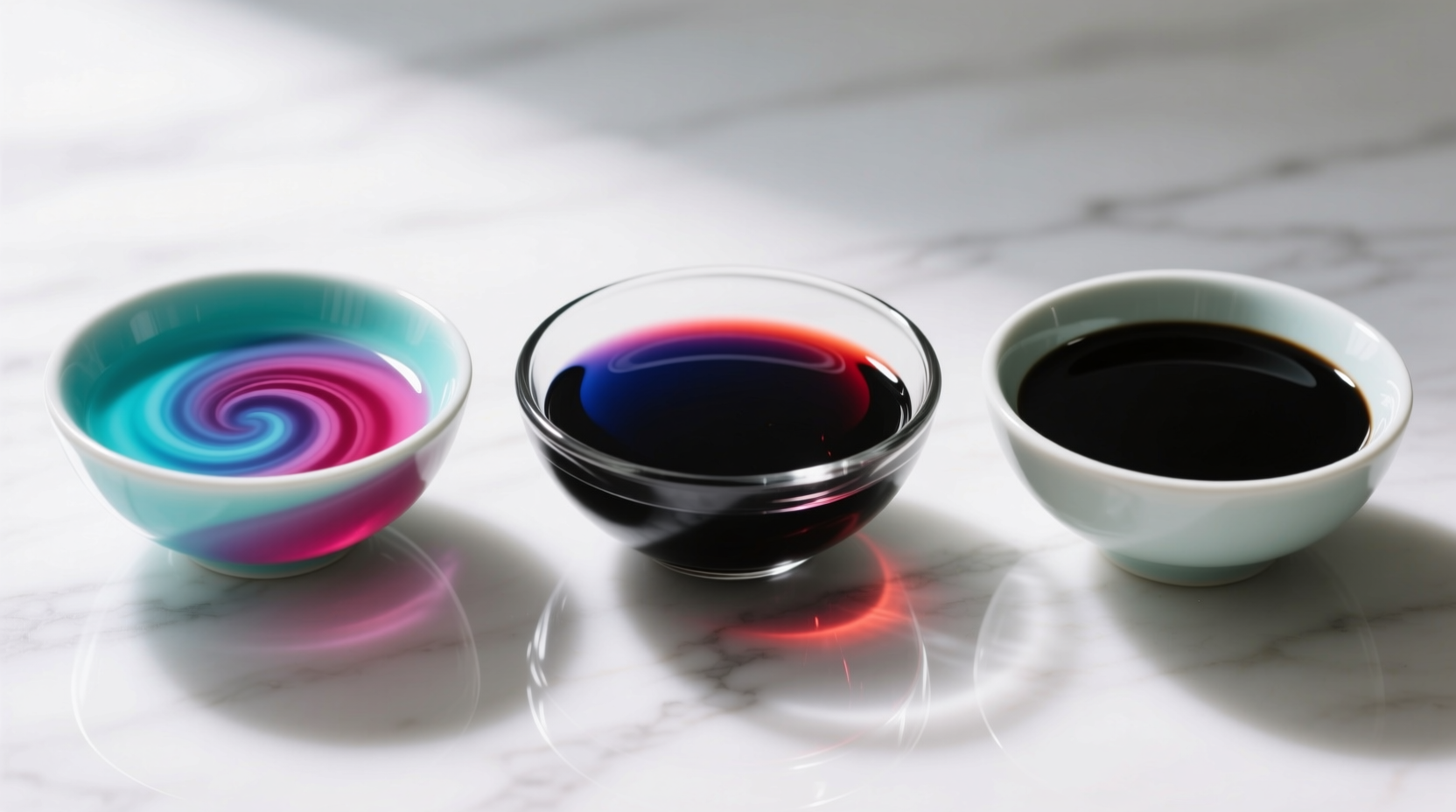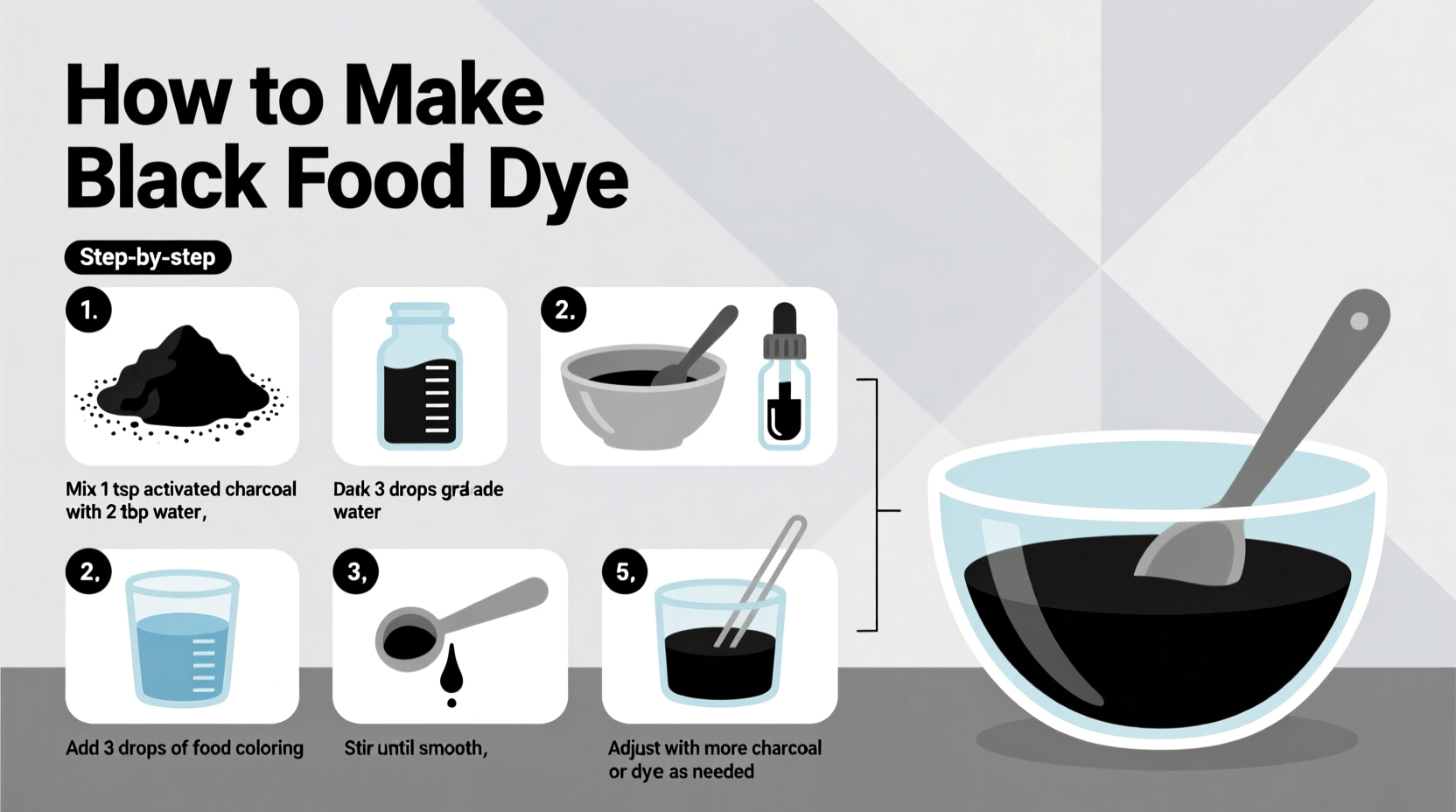The most reliable way to make black food dye at home is by combining equal parts of red, blue, and green food coloring, or using activated charcoal for a natural option. For professional results, mix 5 drops each of blue and green food coloring with 10 drops of red coloring per cup of batter or icing. Natural alternatives include using black sesame paste or squid ink for specific culinary applications. Always test your mixture first as ingredient ratios vary based on the base food's color and consistency.
Why Make Your Own Black Food Dye?
Creating black food coloring at home gives you complete control over ingredients, especially important if you're avoiding artificial dyes or have specific dietary needs. Commercial black food coloring often contains synthetic ingredients like FD&C colors that some consumers prefer to avoid. When you make your own black food dye, you can choose natural alternatives that align with your culinary goals and health preferences.
Understanding Food Color Mixing Principles
Black is technically the absence of color, but in food coloring, we create the perception of black by combining dark shades that absorb most light. In the subtractive color model used for pigments and dyes, combining complementary colors creates darker shades. For food coloring specifically:
| Color Theory Approach | Practical Application | Best For |
|---|---|---|
| RGB (Additive) | Less applicable to food dyes | Digital displays only |
| CMYK (Subtractive) | Mix cyan, magenta, yellow | Professional printing |
| Food Coloring Reality | Mix red, blue, green food coloring | Home baking and decorating |
Food coloring works differently than theoretical color models because the dyes themselves aren't pure primary colors. Most "blue" food coloring has a slight purple tint, while "red" leans toward pink. This affects how colors combine in your recipes.
Three Reliable Methods for Making Black Food Dye
Method 1: The Primary Color Combination (Most Consistent Results)
This approach gives you the most control and consistent results for most baking applications. The key is understanding that food coloring dyes aren't pure primary colors, so the ratio matters more than equal parts.
What you'll need:
- Liquid food coloring (high-quality, concentrated)
- Small dropper bottles
- White base (icing, batter, or plain yogurt for testing)
Step-by-step process:
- Start with a white base to properly assess color development
- For every cup of base, begin with 10 drops of red food coloring
- Add 5 drops of blue food coloring
- Add 5 drops of green food coloring
- Mix thoroughly and evaluate the color
- If too brown: add more blue (2 drops at a time)
- If too purple: add more green (2 drops at a time)
- If too green: add more red (3 drops at a time)
Professional bakers often keep a reference chart of their perfect black mixture for different applications since cake batter, frosting, and fondant require different ratios. The slight acidity in chocolate cake batter, for example, affects how colors develop compared to vanilla batter.
Method 2: Activated Charcoal (Natural Option)
Activated charcoal creates a dramatic black color and has gained popularity for natural food coloring. The U.S. Food and Drug Administration permits its use in food products as a color additive under 21 CFR §73.50, though primarily for specific applications like olive paste.
Important considerations:
- Use only food-grade activated charcoal (not aquarium or air filter charcoal)
- Start with 1/8 teaspoon per cup of base and increase gradually
- Creates a matte black finish rather than glossy
- May affect texture slightly in delicate applications
- Not recommended for large quantities as it can cause digestive discomfort
According to the American Association of Poison Control Centers, activated charcoal is generally recognized as safe in small food quantities but should be used cautiously. It's particularly effective in recipes with strong flavors like chocolate or coffee that can mask any potential aftertaste.
Method 3: Dark Food Infusions (Specialty Applications)
Certain naturally dark foods can create black or near-black hues when concentrated. These work best in specific culinary contexts where their flavor complements the dish:
- Squid ink: Traditional in Mediterranean cuisine, creates a dramatic black color with distinctive briny flavor (perfect for pasta or risotto)
- Black sesame paste: Requires significant quantity to achieve true black, best for Asian-inspired desserts
- Burnt sugar/caramel: Creates a dark brown that appears black in certain lighting, with rich flavor
- Black bean powder: Needs to be finely ground and used in substantial amounts
These natural alternatives work well when the flavor profile aligns with your recipe, but they rarely produce a true black without affecting taste significantly. The University of California's Department of Food Science notes that natural colorants often require higher concentrations than synthetic dyes to achieve similar visual impact, which can alter flavor profiles.

Troubleshooting Common Black Dye Problems
Creating perfect black food coloring presents unique challenges. Here's how to address common issues:
When Your Black Looks Brown or Purple
This is the most frequent problem. The solution depends on what's wrong:
- Brownish tint: Add more blue food coloring (blue counteracts brown)
- Purplish tint: Add small amounts of green to neutralize purple
- Greenish tint: Add more red to balance toward black
Remember that lighting affects how black appears. What looks perfect under kitchen lights might appear brown under restaurant lighting. Always test your colored food in the actual environment where it will be served.
When Black Color Fades During Baking
Heat can cause food coloring to break down. To prevent this:
- Use gel-based food coloring rather than liquid (more concentrated)
- Add coloring toward the end of mixing to minimize exposure to air
- For baked goods, consider adding extra coloring to compensate for heat degradation
- Some professional bakers add a tiny amount of black cocoa powder to maintain color
Safety Considerations for Homemade Black Food Dye
While making your own food coloring is generally safe, certain precautions are essential:
- Never use non-food-grade materials like printer ink, paint, or craft dyes
- Activated charcoal may interfere with medication absorption if consumed in large quantities
- Some natural black colorants (like certain mushroom extracts) can be toxic
- Always label homemade colorings clearly to avoid confusion
The FDA's Center for Food Safety and Applied Nutrition emphasizes that any substance added to food must be either generally recognized as safe (GRAS) or approved as a food additive. When in doubt about an ingredient's safety, consult the FDA's Everything Added to Food in the United States (EAFUS) database.
Creative Applications for Black Food Coloring
Black food coloring opens up unique culinary possibilities:
- Halloween treats: Create dramatic spider webs or haunted mansion details in frosting
- Modern plating: Use black sauces for striking visual contrast on white plates
- Specialty breads: Black charcoal bread has become popular in artisan bakeries
- Cocktail garnishes: Black sugar rims create sophisticated presentation
When using black food coloring, remember that less is often more. A subtle gray or dark charcoal can be more elegant than pitch black in certain applications. Professional pastry chefs often create dimension by using varying shades of dark rather than a single flat black.
Storing Your Homemade Black Food Dye
Proper storage maintains color quality:
- Store in airtight, opaque containers to prevent light degradation
- Refrigerate natural colorants (like squid ink preparations)
- Synthetic color mixtures can be stored at room temperature for up to 6 months
- Always label with creation date and ingredients
Shelf life varies significantly based on ingredients. Commercial food coloring bases typically last longer than natural alternatives. The National Center for Home Food Preservation recommends testing stored colorants before use to ensure they haven't degraded.
Frequently Asked Questions
Can I make black food coloring with just two colors?
While theoretically possible by mixing complementary colors, achieving true black with just two food colors is extremely difficult in practice. Most successful home recipes require all three primary colors (red, blue, and green) because food dyes aren't pure pigments. You might get close with blue and brown, but the result typically appears more grayish than true black.
Why does my black food coloring turn brown after baking?
Heat causes food coloring molecules to break down, particularly red dyes which are less heat-stable. This leaves behind the more stable blue and yellow components, creating a brown appearance. To prevent this, use higher-quality gel coloring, increase the blue component slightly, and consider adding a small amount of black cocoa powder which maintains darkness during baking.
Is activated charcoal safe for children in food coloring?
The American Academy of Pediatrics hasn't issued specific guidelines about activated charcoal in food for children. While small amounts used for coloring are generally considered safe, many pediatric nutritionists recommend avoiding it for young children due to its absorbent properties which could potentially interfere with nutrient absorption. For children's foods, the primary color mixing method is generally preferred.
How can I make black icing without it tasting bitter?
Bitterness often comes from using too much coloring. To avoid this, use highly concentrated gel food colors rather than liquid, which requires less volume to achieve darkness. Start with small amounts and build gradually. For buttercream, adding an extra tablespoon of powdered sugar can help counteract any bitterness. When using natural alternatives like squid ink, pair with strong complementary flavors like chocolate or coffee.











 浙公网安备
33010002000092号
浙公网安备
33010002000092号 浙B2-20120091-4
浙B2-20120091-4